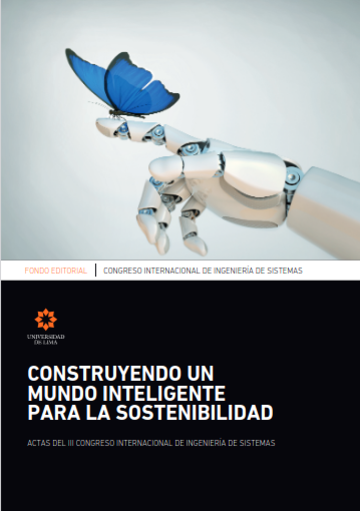Rebuilding a Smart and Sustainable Human Society for the World
DOI:
https://doi.org/10.26439/ciis2020.5515Keywords:
change, sustainability, human society, biosphere, systems thinking, individual roles, Sulitest, Ray Anderson, FSSD, SDGAbstract
A bit under 10 years: That’s what it took engineers and project managers to bring some human beings to the Moon in the 60’s. That’s also the time we have to act and rebuild a smart and sustainable human society for the world, and one good indicator for this is reaching the UN’s Sustainable Development Goals by the year 2030. The Sulitest’s matrix gives an excellent structure to explain the current situation and share information in a structured and helpful way; a way in which all can find an answer to this key question: “What can YOU do NOW to rebuild a smart and sustainable society for the world?” The Framework for Strategic Sustainable Development, also known as The Natural Step Framework, is the best approach I’ve found to help create needed systemic and strategic changes. Examples from the business or scientific areas can shed light on how to achieve this incredibly needed change to discuss the role of technology, and to explore how systems change and can be transformed. In this paper, I’ll share some of the experience and learnings I’ve gained over the last 20 years, trying to acce lerate change towards sustainability. I’ll share the fact that it’s fun and motivating, as well as an incredible opportunity for all, even if it’s not necessarily always easy like most good things which do require efforts to reach. And for all the ones who won’t be able to read further: If not now, when? If not here, where? If not you and I, who?
Downloads
References
Anderson, R. (1998). Mid-Course Correction. Chelsea Green Publishing.
Anderson, R. (2009). The business logic of sustainability [Archivo de Video]. TED. https://www.ted.com/talks/ray_anderson_on_the_business_logic_of_sustainability
Anthropocene. ( July 3rd, 2021). In Wikipedia. https://en.wikipedia.org/wiki/Anthropocene
Global Footprint Network (n. d.). Earth Overshoot Day https://www.footprintnetwork.org/our-work/earth-overshoot-day/
Göran, B. & Karl-Henrik, R. (2017). A framework for strategic sustainable development. Journal of Cleaner Production, 140,17-31.
Max-Neef, M. A., Elizalde A., & Hopenhayn, M. (1991). Human Scale Development. http://www.wtf.tw/ref/max-neef.pdf
Richard, R. & Lundholm K. (2005). Engaging individuals to act strategically towards sustainability. Master’s thesis, MSLS, BTH. http://www.diva-portal.org/smash/get/diva2:830651/FULLTEXT01.pdf
Sivers, D. (2010). How to start a movement [Archivo de Video]. TED. https://www.ted.com/talks/derek_sivers_how_to_start_a_movement
Steffen et al. (2015). Planetary Boundaries: Guiding human development on a changing planet. Science, 347(6223).
Sulitest. (n. d.) https://www.sulitest.org
United Nations. (n. d.). The 17 Goals. https://sdgs.un.org/goals
United Nations. (2020). Raising & Mapping Awareness of the Global Goals High Level Political Forum on Sustainable Development. https://www.sulitest.org/files/source/hlpf2020_report.pdf
World Commission on Environment and Development. (1987). Our Common Future.Oxford University Press.


